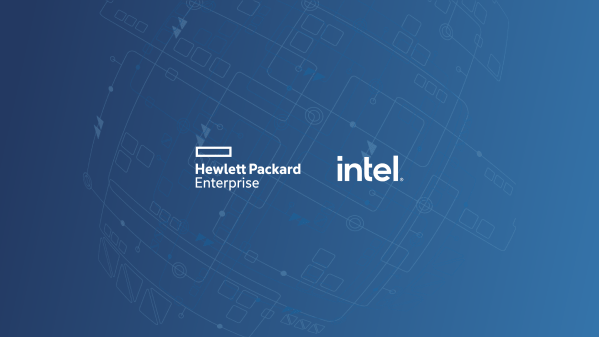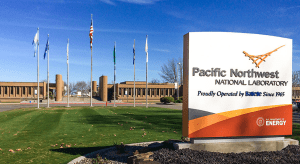- Sponsored
- Insights
Using AI and Generative AI for cloud-based modernization of federal agencies

As cloud computing environments expand and diversify, government agencies are confronted with a growing array of cloud services, options, and offerings. To navigate this complexity effectively, agencies must formulate well-informed strategies aimed at understanding, anticipating, rationalizing, and optimizing major cloud architecture decisions to reduce technical debt and create seamless interaction with applications.
Types of clouds

Strategy development relies on understanding basic cloud architecture. There are four main types of cloud computing architectures: private clouds, public clouds, hybrid clouds, and multi-clouds. Multi-clouds can have multiple public cloud service providers (CSPs); hybrid-clouds have an on-premises data center as well as a public cloud; and hybrid multi-clouds have a mixture of private and public cloud services. Each architecture has a different impact on an agency.
The intersection of AI and cloud computing
The synergy between AI and cloud computing has been evident since the inception of these technologies. Cloud computing facilitated the rise of AI, but in recent years, attention has shifted to leveraging AI for cloud management and cybersecurity. AI has played a pivotal role in the field of AIOPs (AI for Operations), aiding in the creation of various AI-driven copilots for tasks like security and modernization.
Utilizing AI to tackle cloud modernization challenges in the federal market
Throughout the cloud modernization journey, AI and generative AI can help ensure leaders make informed decisions and expedite the elimination of technical debt. Here are key challenges these technologies can help overcome.
Challenge #1: Legacy applications
Over the past few years, cloud adoption has become the default choice for new applications. However, a significant number of legacy applications in the U.S. federal market remains unmigrated for various reasons, which increases technical debt. There is a strong case for using AI to expedite the elimination of this technical debt to align with mission objectives. Additionally, there is tremendous potential for generative AI to migrate on-premises infrastructures to public or private clouds.
The primary challenge with legacy applications in the federal sector is the discovery and analysis process. To overcome this, deep learning tools can be used to crawl through legacy environments, collecting data to create a comprehensive application overview within complex infrastructures. The true value of such deep learning techniques emerges when applied at an enterprise scale. For years, creating an enterprise-wide view of the application portfolio has been a challenge for enterprise architects involved in modernization. But deep learning can create a reporting system that provides a digital modernization roadmap for the enterprise. Generative AI can then leverage these deep learning datasets to facilitate informed modernization decisions through interactive techniques.
Challenge #2: Choosing a path forward
Another critical concern in cloud modernization is selecting the optimal path. Binary choices between modernization and migration may not always serve the best interests of the organization or agency. While certain migration strategies make sense at the application level, adopting a portfolio view can lead to more optimal decisions for enterprises.
Various generative AI-based techniques can resolve this dilemma at the portfolio level through an automated application rationalization framework. A generative-AI-based query system will greatly assist in making appropriate migration choices that produce the desired result.
Challenge #3: Cost management
While the true power of the cloud lies in its elasticity, over time, this elasticity can result in “cloud sprawl,” which increases cost and can increase technical debt.
Implementing AI and generative AI tools that perform cloud cost management through regular recommendation optimization of infrastructure can help enterprises save substantially and ensure compliance with federal contracts. A continuous, intelligent view of costs can aid in planning project budgets to minimize the impact of migration costs.
Challenge #4: Compliance
Ensuring cloud compliance is crucial in federal markets where regulations and security measures are, by necessity, always top of mind.
Generative AI can produce template-based infrastructure-as-code, forming the foundation for consistent, secure, and best-practice cloud environments. Following the creation of cloud infrastructure by a cloud AI companion, another Generative AI tool can autonomously scan for threats, compliance with corporate policies, adherence to industry best practices, and alignment with cloud provider frameworks such as the AWS Well-Architected Framework. Scanning for misconfigurations is especially vital, as those account for a significant portion of cloud security challenges.
Beyond the dashboard
Managing a cloud infrastructure that consists of millions of resources is a daunting task when relying solely on dashboards and spreadsheets, and it carries significant risks. Many cloud operation management vendors now offer AI-driven solutions specifically for managing hybrid and multi-cloud environments, a well-established use case in the realm of AI in cloud computing known as AIOPs. These generative AI use cases include:
- Workload management strategy through AI
- Financial operations (FinOps) management strategy through deep analytics
- Formulating policies for data management in the cloud
- Defining security postures and addressing workload-specific security requirements
- Identifying and training staff to develop a knowledgeable workforce
In summary, AI and generative AI hold great potential to assist federal agencies that need to reduce technical debt and accelerate cloud modernization initiatives at mission-critical speeds. AI and generative AI capabilities span every phase, from assessment to operations. While this market is still emerging and evolving, many independent software vendors (ISVs) and service providers are already offering solutions in this domain.
For clients looking to modernize on Amazon Web Services, IBM Consulting plans to integrate generative AI services into its proprietary IBM Consulting Cloud Accelerator to help accelerate the cloud transformation process.
Sandeep Shilawat is vice president of cloud technology at Octo, an IBM company.
For more information, contact Sandeep.Shilawat@octo.us or visit the IBM Booth #930 at the AWS re:Invent Conference in Las Vegas, Nevada, beginning November 27, 2023.






